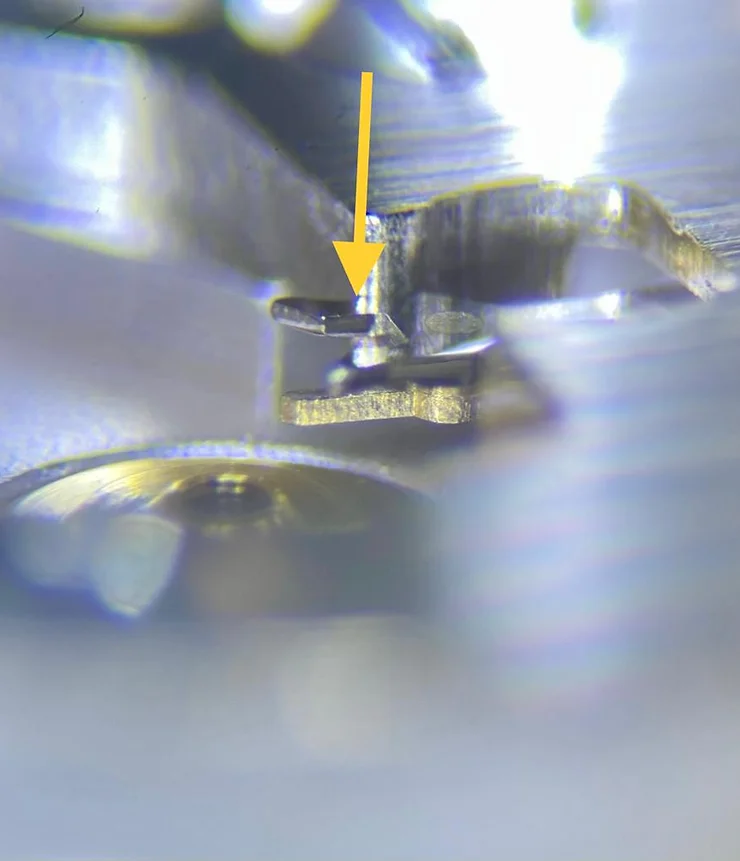The Omega Speedmaster is one of the most instantly recognizable watches still produced today. Whilst it has had movement upgrades throughout the decades, the watch has stayed largely unchanged since the 1960's. The Omega Speedmaster Professional with the 1861 or 861 movement has a persistent problem that usually needs rectifying and that is what we are going to look at here today.
The escapement of a mechanical watch is made up of a number of components as we can see highlighted in the picture below.

These components have to work in harmony for the watch movement to run correctly and keep accurate time. The specific aspect of the escapement we will examine today is the division, or alignment of the escapement. All mechanical objects need free play to function correctly. If a part of a machine binds, generally that machine will stop functioning and the same is true of a watch movement.
In watchmaking we refer to this as end-shake and side-shake. The end-shake is the up and down play a wheel or part has and side shake is the side-to-side movement a wheel or part has. If there wasn't sufficient 'shake' the watch would have too much friction, bind up and stop working. If the end-shake is too large, however, certain components may not interact with the parts they are supposed to. Perhaps the end-shake is correct, but if the division, or alignment is out, we could still run the risk of the components not interacting correctly when the watch is put in various different positions.
Here we can see the steps involved in adjusting the clearances to make sure all works in harmony.

The Omega 1861 movement does tend to have clearance problems from the factory. I'm not sure why, but it seems to be more prevalent than other movements. We have the movement stripped out, with only the balance and escapement in place.

Here we can see the acting surface of the escape wheel tooth is at the top of the pallet stone. If we move the escape wheel up to the limit of its end-shake, the tooth will almost miss the surface of the pallet stone.

We can also see that the impulse jewel which interacts with the horns of the pallet fork is at its limit. If we move the balance the full travel of its end-shake we will almost miss the horns. We also have a guard pin a safety roller alignment issue.

A closer shot.

Another issue we find which is not related to the alignment is wear on the pallet fork. Over time the hard, ruby impulse pin wears down the horns of the escapement and starts to cut a notch. This causes amplitude to drop and decreases the performance of the watch.

Here we can see a side on view. Note the notch that has been cut.

The best solution here is to change out the pallet fork, if available. Thankfully, most Omega pallet forks for vintage pieces are still be produced. This being a modern caliber is no issue at all.

Note the smooth, shiny and flat surface of the new pallet fork.

With the new pallet fork in place we can get back to the escapement adjusting. Based on the fact that the escape wheel and impulse jewel are out of alignment, we know that with one movement of the pallet fork we can adjust both issues. We move both stones, keeping the correct end-shake but shifting the whole part in one direction. In this case we want it to move upwards. We do this and ca see that escape wheel tooth is now in the middle of the pallet stone.

We can also see that the ruby impulse pin is now much more centered and so is our guard pin and safety roller.

With those faults now rectified we can get on with cleaning the watch, re-assembly and lubrication.
This alignment issue, even on new watches goes to show that when it comes to watchmaking, checking all aspects of the movement is the only way to properly service any watch.
